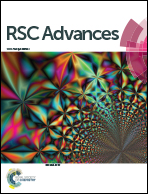Effects of calcination and pretreatment temperatures on the catalytic activity and stability of H2-treated WO3/SiO2 catalysts in metathesis of ethylene and 2-butene
Abstract
The effects of calcination and pretreatment temperatures of the H2-treated WO3/SiO2 catalysts in metathesis of ethylene and 2-butene to propylene were investigated. The results showed that pretreatment with pure hydrogen over the non-calcined catalysts resulted in higher activity and stability than the calcined catalysts, and the hydrogen pretreatment temperature at 650 °C offered the highest 2-butene conversion and propylene selectivity. The calcination of the catalyst before hydrogen pretreatment was proved to be unnecessary. As revealed by various characterization results from N2 physisorption, XRD, TEM, UV-Vis, Raman, in situ H2-TPR, in situ NH3-DRIFTS and in situ NH3-TPD techniques, activity of the metathesis of ethylene and 2-butene to propylene was related to tungsten dispersion on the support, WO2.83 and WO2 phase composition, and isolated surface tetrahedral tungsten oxide species. The stability of the metathesis reaction was also related to the total acidity and the acid sites of both Brønsted and Lewis acid sites.



 Please wait while we load your content...
Please wait while we load your content...